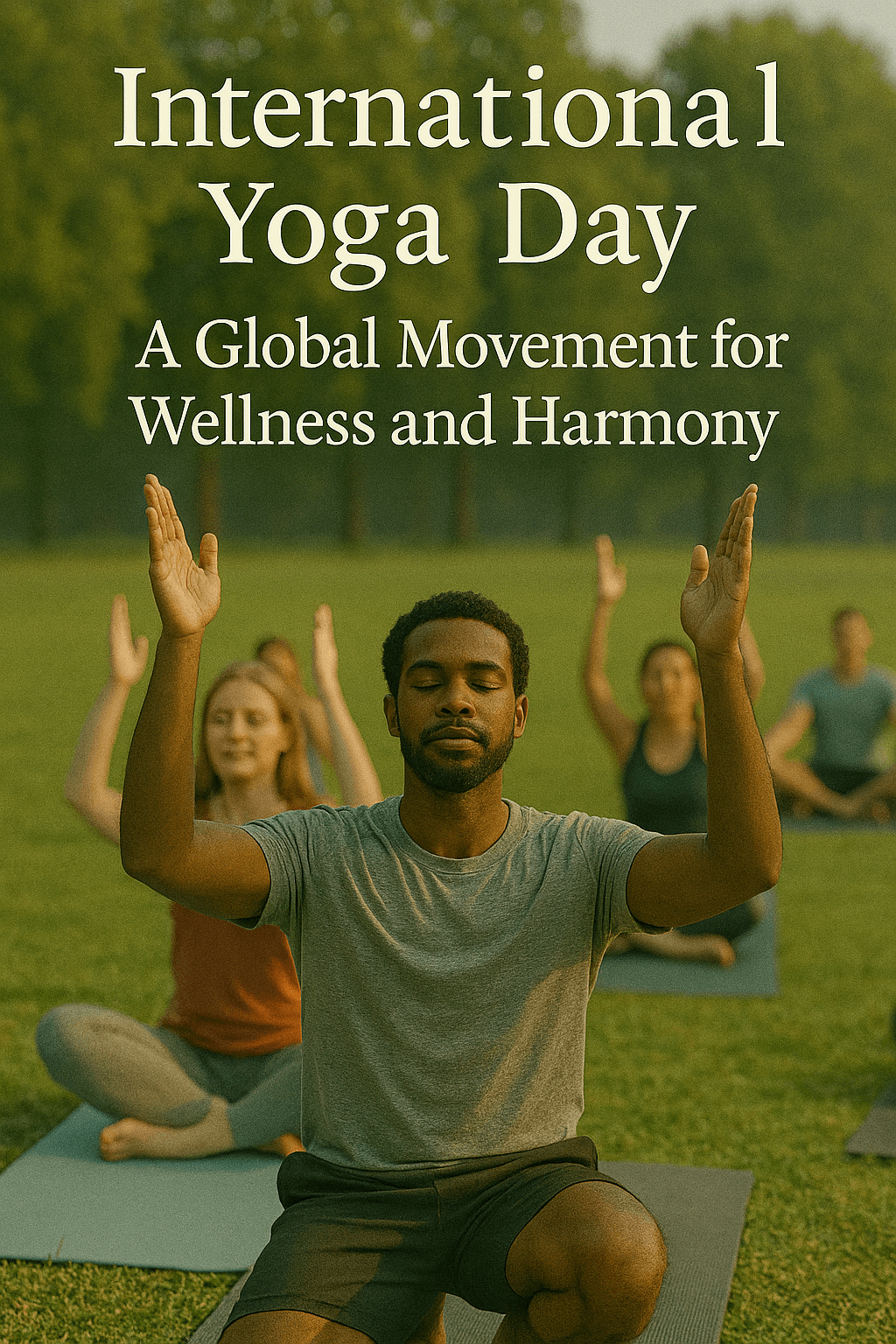International Yoga Day: A Global Movement for Wellness and Harmony
International Yoga Day, celebrated annually on June 21, has become a worldwide movement recognizing the significance of yoga in fostering holistic health and global unity. Initiated by the Government of India and officially adopted by the United Nations General Assembly in 2014, this day has grown into a symbol of international cooperation around wellness, mindfulness, and cultural respect.
Origins and Historical Context
The idea for International Yoga Day was proposed by Indian Prime Minister Narendra Modi during his speech at the United Nations General Assembly on September 27, 2014. He emphasized yoga as an invaluable gift of India’s ancient tradition, a practice that embodies the unity of mind and body, thought and action, harmony between humans and nature. The resolution to declare June 21 as the International Day of Yoga was supported by 177 countries, making it one of the most widely supported resolutions in the history of the UN.
The date June 21 holds a special significance. It is the Summer Solstice, the longest day of the year in the Northern Hemisphere, a day deeply rooted in spiritual practices across cultures. It marks the transition to Dakshinayana, a period believed in Indian tradition to support spiritual pursuits.
What Is Yoga?
Yoga, derived from the Sanskrit word “Yuj,” means to unite or to join. It signifies the union of individual consciousness with universal consciousness. Practiced for thousands of years in India, yoga is more than just physical exercise. It is a philosophy, a science, and a way of life that encompasses physical postures (asanas), breathing techniques (pranayama), meditation (dhyana), ethical guidelines (yamas and niyamas), and spiritual insight.
Yoga has evolved over centuries and adapted to modern times, with various styles and schools like Hatha Yoga, Ashtanga, Vinyasa, Iyengar, and Kundalini. Despite regional and stylistic differences, all forms of yoga aim to bring balance, discipline, and inner peace.
Themes and Celebrations
Each year, International Yoga Day is observed with a unique theme that reflects global wellness priorities. The theme for 2025, “Yoga for Self and Society,” highlights the role of individual well-being in shaping healthier communities and societies. It acknowledges that a peaceful, centered individual can contribute meaningfully to collective harmony.
International Yoga Day is celebrated across the globe with mass yoga sessions held in open spaces—parks, stadiums, beaches, and public venues. In India, the main event is often led by the Prime Minister and is attended by thousands of participants. Various governments, NGOs, yoga institutions, and health organizations coordinate workshops, online classes, and awareness drives.
Digital media also plays a major role. Hashtags like #InternationalYogaDay and #YogaForAll trend globally as millions share their yoga routines, participate in challenges, and attend virtual events.
Health Benefits of Yoga
Scientific research continues to validate the health benefits of yoga. Some of the most well-documented advantages include:
– Improved flexibility, posture, and strength
– Enhanced respiratory and cardiovascular function
– Better stress management and emotional regulation
– Improved concentration and cognitive clarity
– Support in managing chronic conditions like hypertension, anxiety, diabetes, and arthritis
Yoga’s meditative elements also support mental health by reducing symptoms of depression and fostering mindfulness. In an era of rising stress, sedentary lifestyles, and mental health challenges, yoga offers a natural, accessible tool for resilience.
Yoga for All: Inclusion and Accessibility
One of the core principles of International Yoga Day is inclusivity. Yoga is for everyone—regardless of age, gender, background, or ability. NGOs and wellness organizations use this occasion to reach underserved and marginalized populations. Free yoga classes are organized in slums, prisons, orphanages, and refugee camps to make wellness a universal right.
Many programs now focus on adapting yoga for people with disabilities, senior citizens, and those with specific medical needs. Initiatives like chair yoga, therapeutic yoga, and yoga for trauma recovery are increasingly popular.
Role of NGOs and Civil Society
NGOs have played a vital role in democratizing access to yoga. On International Yoga Day, many NGOs run large-scale campaigns to promote wellness and preventive healthcare, particularly in rural and underserved areas. They collaborate with schools, local governments, hospitals, and corporations to spread awareness.
Some also offer year-round yoga education to empower communities with tools for self-care. These efforts are aligned with the UN’s Sustainable Development Goals (SDGs), especially SDG 3: Good Health and Well-Being.
The Global Impact
Since its inception, International Yoga Day has had a global cultural impact. More than 190 countries have participated in the celebrations, including the United States, Canada, Australia, Germany, Japan, Kenya, and Brazil. Iconic landmarks like the Eiffel Tower, Times Square, and the Sydney Opera House have hosted yoga sessions.
The day is also an opportunity for cultural diplomacy, as Indian embassies worldwide organize yoga events to build people-to-people connections. Yoga’s appeal lies in its universality—it requires no expensive equipment, can be practiced anywhere, and adapts to different needs.
Looking Ahead
As we move deeper into the 21st century, the relevance of yoga continues to grow. With increasing awareness about mental health, environmental sustainability, and holistic lifestyles, yoga stands out as a practical philosophy for modern living.
Governments, schools, companies, and individuals are now integrating yoga into their routines not just as a fitness trend, but as a pathway to balanced living. With the theme “Yoga for Self and Society,” the 2025 observance calls for introspection and action—reminding us that our personal well-being is linked to global peace and sustainability.
Conclusion
International Yoga Day is more than a celebration—it is a call to action. It invites each of us to embrace a lifestyle of mindfulness, compassion, and harmony. In a world divided by stress, conflict, and inequality, yoga reminds us of our shared humanity.
So on June 21, whether you’re on a beach in Brazil, a park in Paris, or a rooftop in Delhi—unroll your mat, take a deep breath, and join millions in celebrating the ancient wisdom that continues to heal and unite the world.


Leave a Reply
You must be logged in to post a comment.